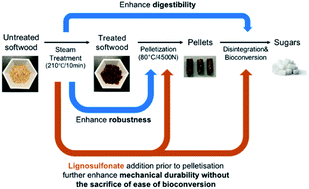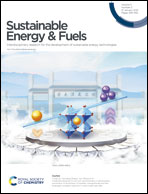The influence of pre-steaming and lignin distribution on wood pellet robustness and ease of subsequent enzyme-mediated cellulose hydrolysis
Abstract
Steam pretreatment conditions that are typically used to enhance wood derived pellet durability are usually less severe than those used to enhance the enzymatic hydrolysis of woody substrates. In the work reported here steam treated softwoods were used to make pellets and their robustness and subsequent ease of enzymatic hydrolysis were assessed. Although pre-steaming enhanced the durability of pellets it decreased the ease of enzymatic hydrolysis when compared to non-pelletised, pretreated softwoods. However, subsequent mechanical disintegration of the pellets resulted in comparable hydrolysis yields. Transmission Electron Microscopy (TEM) observations suggested that steaming resulted in lignin redistribution which enhanced pellet durability. However, as pelletisation had not changed the lignin distribution within the cell wall subsequent, mild, mechanical disintegration resulted in a softwood substrate that could be as readily hydrolyzed as the non-pelletised feedstock. The addition of lignosulfonates prior to pelletisation substantially enhanced pellet durability with the beneficial effects on subsequent cellulose hydrolysis. This was likely due to the lignosulfonates acting as a surfactant and decreasing the unproductive binding of enzymes to the lignin.



 Please wait while we load your content...
Please wait while we load your content...